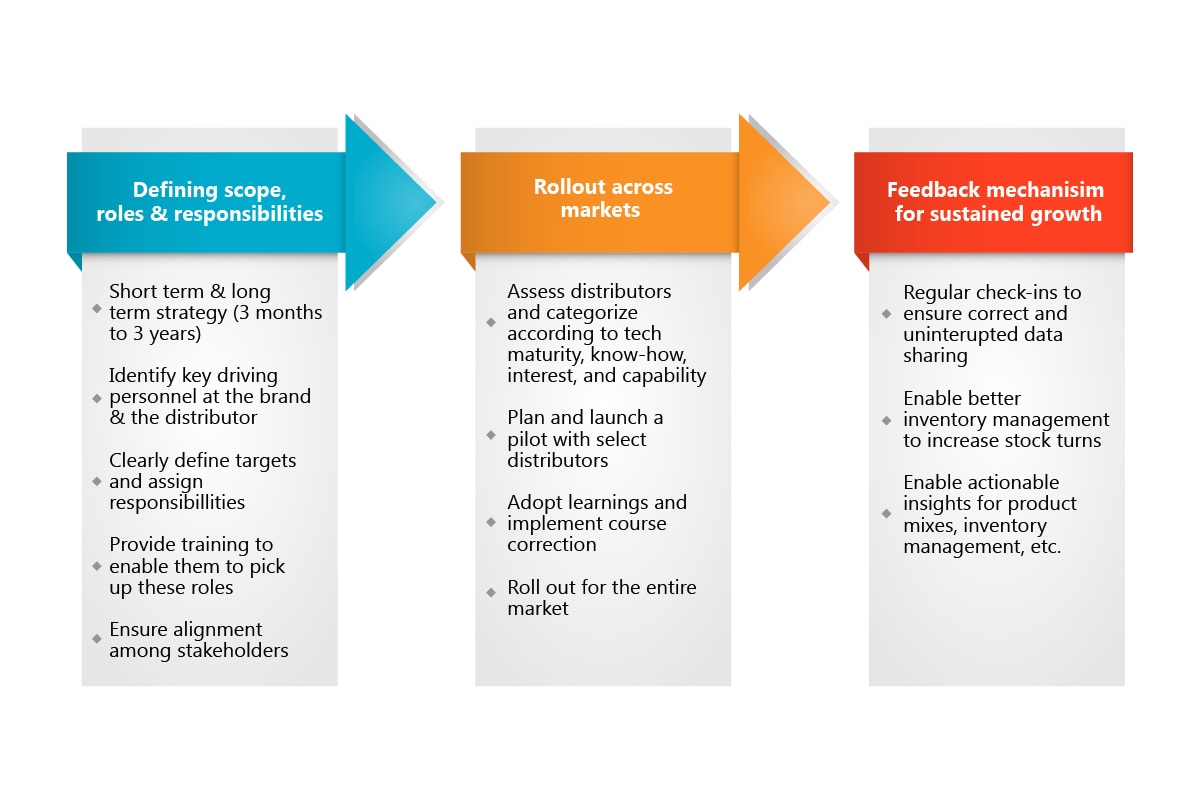Retail Forwards
Undeniably, the retail industry has evolved at a rapid pace over the years, and in order to stay competitive retailers have had to modify their strategies. The global retail sales is projected to be around $28 trillion US dollars by 2020, up from $22 trillion in 2016. Moreover, businesses are moving from growing physical retail stores to launching new digital sales models and acquiring businesses to enhance their fulfillment processes. The costs to increase market share continues to grow, which creates the need for retailers to hone in on areas where they can optimize the spend as well as generate greater value.
Indeed, many areas of the retail business can be optimized. McKinsey estimates that over 50% of the work in the retail sector can be automated with activities ranging from logistics and supply chain management, accounting and finance, inventory management through managing customer campaigns.
Supply Chain Management Challenge
As mentioned earlier, supply chain in retail is fast-changing, and the use of emerging technologies should be leveraged for differentiation. With higher expectations from customers for faster delivery and cheaper products, retailers need to source their products from an ever-growing list of suppliers and have warehouses strategically located for expedited shipping. RPA can help manage all related processes, from stock management to creating necessary invoicing for these large operations. RPA also enables the seamless and accurate transfer of data between the different systems, including warehouse, finance and market reporting.
The Role of Intelligent Process Automation (IPA)
Though RPA is an initial first step for rules-based repetitive tasks to generate better efficiencies in overall inventory management, there are many aspects of data collection where some aspect of ‘intelligent’ automation is required. With inventory management, there may be exceptions in invoice processing depending on vendor and warehouse location that are out of the scope of regular rules-based only RPA software. Historically, retailers would need human management of these details, which would take significant time as well as cost. When it comes to IPA, Artificial Intelligence technologies including computer vision, machine learning and cognitive automation can help augment the human worker by assisting in processing the data further, so that minimal human interaction is required with data management and communications. With IPA, the transfer of data can be seamless, allowing the employee to focus on analysis and resulting in better-informed decisions.
How Can AssistEdge18.0 Empower the Supply Chain Process?
A Closer Look
In a related case, one of our clients, a global retail giant had challenges in automating their procurement processes that involved working with 2,000 vendors and standardizing processes across 60 warehouses. A typical process would require 3-way matching of purchase order, invoice and delivery receipt before entry could be made into SAP and vendor payments could be processed. This required manual intervention/human decision to verify the quality of goods, the quantity of goods, price and the invoice payment which often led to SLA failures, payment delays, and human error.
With AssistEdge 18.0, the client was able to leverage AI capabilities in addition to an element of human interaction to fully automate as well as ensure that the ‘last mile’ of the procurement automation process could be enabled with 100% accuracy.
Outcomes:
A process that could previously only be automated up to 10% using basic data extraction and deterministic automation was now fully automated.
For more case study details, please go to: https://www.edgeverve.com/assistedge/global-retail-giant-assistedge-rpa-18-0/
So how does this impact retail business?
With business still growing, albeit focused more in the digital arena, retailers need to move fast to service an increasingly demanding consumer audience. Using IPA, retail supply chain management can adapt to the needs for global sourcing and delivery. There are many aspects to supply chain management, but as evidenced in the case study, procurement processes involving a multitude of suppliers can be streamlined and automated intelligently. As IPA becomes more mature, retailers will be able to continue to leverage the technology to enhance other areas of their operations and pursue with their aim of digital expansion.
Sources:
https://www.statista.com/statistics/443522/global-retail-sales/
